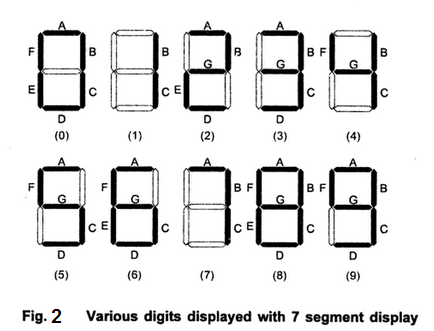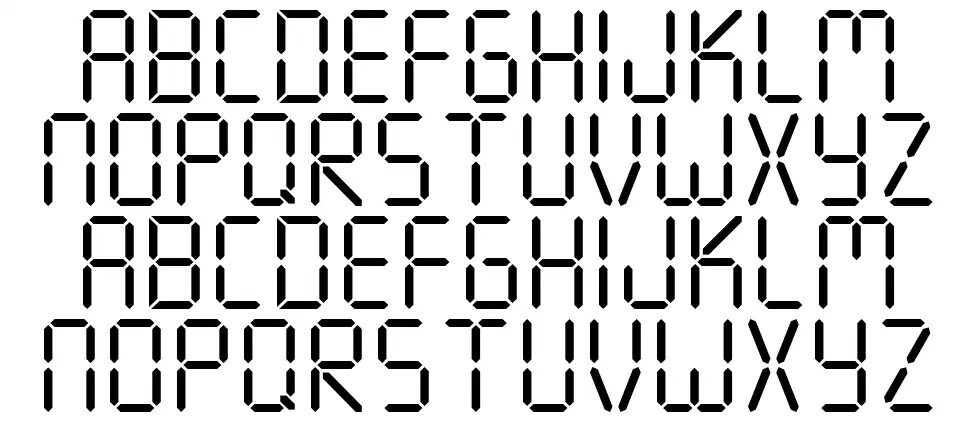


The Magic Black Box, an electronic version of the Magic 8-Ball toy, used a ROM to generate 64 different 16-character alphanumeric messages on a LED display.For comparison, the National Semiconductor MM74C912 displayed "o" for A and B, "−" for C, D and E, F, and blank for G. Not all 7-segment decoders were suitable to display digits above nine at all.(The Б3-34 character set allowed for a cross-alphabet display of the English word "Error" as either EГГ0Г or 3ГГ0Г, depending on the error, in all-numeric form during error messages.) Soviet programmable calculators like the Б3-34 instead used the symbols "−", "L", "C", "Г", "E", and " " (space) to display hexadecimal numbers above nine.However, this modern scheme was not always followed in the past, and various other schemes could be found as well: To avoid ambiguity between the digit 6 and the letter b the digit 6 is displayed with segment A lit. Although there is no official standard, today most devices displaying hex digits use the unique forms shown to the right: uppercase A, lowercase b, uppercase C, lowercase d, uppercase E and F. These are needed on some scientific calculators, and are used with some testing displays on electronic equipment. One such special case is the display of the letters A–F when denoting the hexadecimal values (digits) 10–15. In addition to the ten digits, seven-segment displays can be used to show most letters of the Latin, Cyrillic and Greek alphabets including punctuation. ^ Grey areas indicate non-assigned code points Official Unicode Consortium code chart (PDF) In Unicode 13.0, 10 codepoints had been given for segmented digits 0–9 in the Symbols for Legacy Computing block: CDEG ( ) is occasionally encountered on older calculators to represent 0. Although EF ( ) could also be used to represent digit 1, this seems to be rarely done if ever. Two basic conventions are in common use for some Arabic numerals: display segment A is optional for digit 6 ( / ), segment F for 7 ( / ), and segment D for 9 ( / ).

Unicode provides encoding codepoint for segmented digits in Unicode 13.0 in Symbols for Legacy Computing block. Such representation of characters is not standardized by any relevant entity (e.g. The topic of seven-segment display character representations revolves around the various shapes of numerical digits, letters, and punctuation devisable on seven-segment displays. The individual segments of a seven-segment display.


 0 kommentar(er)
0 kommentar(er)
